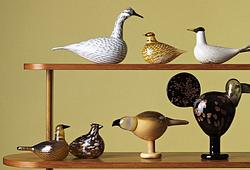PARTI MEMORABILIA, 30 delar, svenska beskickningen i Tokyo tidigt 1900-tal.
Fotografi från 1907-08 av en svensk ambassad hos Vicekungen av Nanking med envoyé Gustaf Wallenberg i spetsen. Enligt text á tergo överlämnades som present svenska Luxlampor att upplysa hans harem? med. Bildstorl 20 x 27. Dansprogram med vidhängande penna från bröllopsbal hos prins Arisugawa Takehito 5 nov 1908. Julkort från 1908 resp 1910, "Imperial Government Railways Tokyo", 22 vykort med motiv bla från Tokyo och Yokohama. Meny från middag hållen på Svenska legationen. Tre små träsnitt varav två med almanackor från 1910.
Slitage, fläckar.
Alkuperä - Provenienssi
Gustaf och Annie Wallenberg ( Raoul Wallenbergs farföräldrar)
Muut tiedot
Prince Arisugawa Takehito (有栖川宮威仁親王, Arisugawa-no-miya Takehito-Shinnō?, January 13, 1862 – July 5, 1913) was the 10th head of a cadet branch of the Japanese imperial family and a career officer in the Imperial Japanese Navy.
Prince Takehiko was born in Kyoto as a scion of the Arisugawa-no-miya (有栖川宮家?) house, one of the shinnōke branches of the Imperial Family of Japan, which were eligible to succeed to the Chrysanthemum Throne in the event that the main line should die out. As he was born when the country was still under rule by the Tokugawa Bakufu, he was sent as a youth into the Buddhist priesthood, and assigned to serve at the monzeki temple of Myōhō-in in Kyoto. After the Meiji Restoration, he was recalled to secular life, and relocated to Tokyo in 1871.
In 1874, on orders from Emperor Meiji, Prince Arisugawa enrolled in the Imperial Japanese Naval Academy. In 1877, despite his youth, he was sent as an observer to Satsuma Rebellion, and landed in Kagoshima shortly after it was secured by Imperial forces to observe the devastation first hand.
In 1879, Prince Arisugawa was sent as a military attaché to Great Britain and embarked upon the HMS Iron Duke, the flagship of Britain's Royal Navy, for further training. He served in the Channel Squadron for a year before returning to Japan as an ensign.
In 1880, shortly after his wedding, Prince Arisugawa was sent back to England again as a cadet at the Royal Naval College, Greenwich in England. He returned to Japan in June 1883. Prince and Princess Arisugawa made an extensive tour of Europe and America in 1889.
Prince Arisugawa’s first naval command was that of the corvette Katsuragi in early 1890, followed by the cruiser Takao later that year.
He was assigned to the escort of Russian Crown Prince Nikolai (later Tsar Nicholas II) during his tour of Japan in 1891. While under Prince Takehito's care, Nikolai was wounded in an assassination attempt (the Otsu Scandal), which led to a considerable worsening of diplomatic relations between Japan and Russia.
In 1892, Prince Arisugawa was captain of the cruiser Chiyoda. Prince Takehito succeeded to the Arisugawa-no-miya title upon the death of his half-brother, Prince Arisugawa Taruhito, on January 15, 1895.
During the First Sino-Japanese War (1894-95), he commanded the cruiser Matsushima, and subsequently the cruiser Hashidate in combat, The Prince attained the rank of rear admiral on November 11, 1896. In 1896, the prince represented Emperor Meiji at the Diamond Jubilee celebrations for Queen Victoria.
Prince Arisugawa advanced to the rank of vice admiral on September 26, 1899.
Promoted to full admiral on June 28, 1905, Emperor Meiji awarded the prince the Order of the Golden Kite (3rd Class) for his service during the Russo-Japanese War. He visited Europe from March–August 1905.
The prince and his wife returned to Europe once more in 1905 to represent Emperor Meiji at the wedding of the German Crown Prince Wilhelm (1882-1951) to Duchess Cecile of Mecklenburg-Schwerin. He visited Great Britain again on his way back to Japan. During that visit, King Edward VII granted Prince Arisugawa the Knight Grand Cross of the Most Honorable Order of the Bath.
Of weak constitution since childhood, Prince Arisugawa took frequent medical leaves during his naval career. He built a summer home in Kobe and went into semi-retirement in 1909. Prince Arisugawa died on July 3, 1913 at his Kobe residence. However, news of his death was not made immediately public, and his body was rushed back to his palace in Kōjimachi, Tokyo by a specially chartered train, and his death formally announced on July 10, 1913.
He advanced to the honorary rank of fleet admiral on July 7, 1913, which was after his actual death, but before his "official death date", so the award was not considered posthumous. However, he was also awarded the Collar of the Supreme Order of the Chrysanthemum posthumously.
On December 11, 1880, Prince Arisugawa married Maeda Yasuko (March 15, 1864–June 30, 1923), the fourth daughter of Maeda Yoshiyasu, the last daimyō of Kaga Domain (modern Ishikawa prefecture), by whom he had three children.
- Princess Isako (績子女王?, October 17, 1885, - September 30, 1886)
- Prince Arisugawa Tanehito (有栖川宮栽仁王?, September 22, 1887 – April 7, 1908)
- Princess Mieko (實枝子女王?, February 14, 1891 – April 25, 1933); married Prince Tokugawa Yoshihisa.
Since the prince died without a male heir (his son Prince Tanehito having died of appendicitis in 1908 while attending the Imperial Japanese Naval Academy at Etajima, Hiroshima), the direct line of descent of the house of Arisugawa-no-miya became extinct.
However, his boyhood friend Prince Yoshihito, Emperor Taishō, revived the house (which reverted to its original name of Takamatsu-no-miya) in favor of his third son, Prince Takamatsu Nobuhito. Prince Nobuhito subsequently married Kikuko Tokugawa, a granddaughter of Prince Arisugawa Takehito.
* The site of Prince Arisugawa’s Tokyo palace is now the Arisugawa-no-miya Memorial Park. It is located in Minami Azabu, Minato, Tokyo and its extensive gardens are open to the public. The site of his seaside summer home in Hayama, Kanagawa Prefecture is now the site of the annex of the Kanagawa Prefectural Museum of Modern Art
* A large standing bronze statue of Prince Arisugawa exists outside the site of his former summer residence in Fukushima Prefecture, north of Tokyo.
Källa: Wikipedia.



























